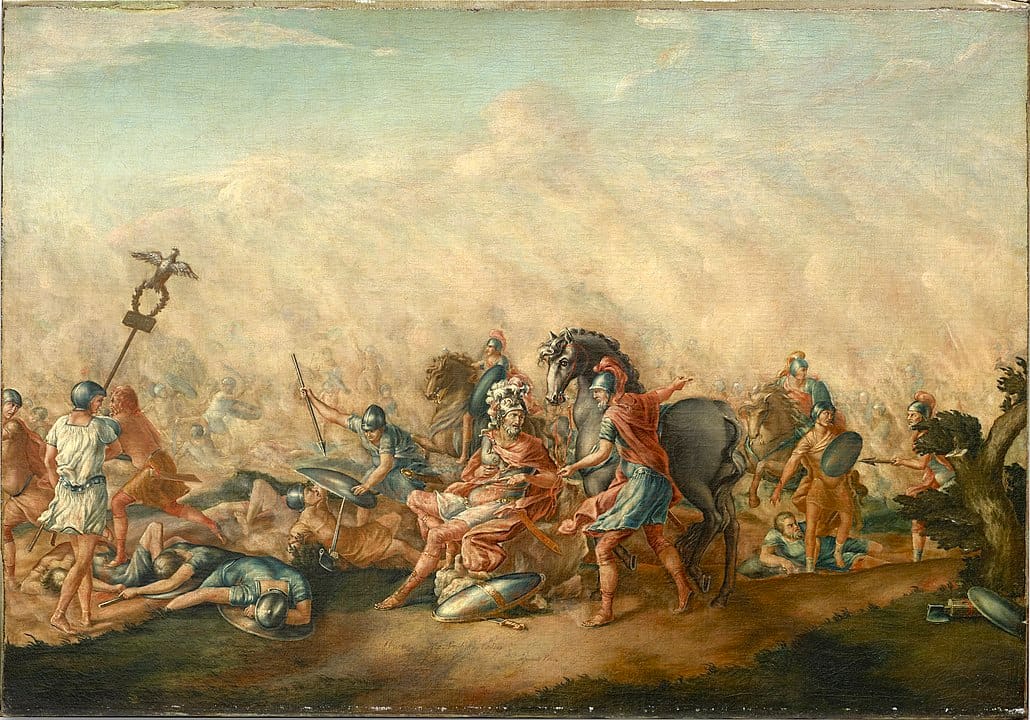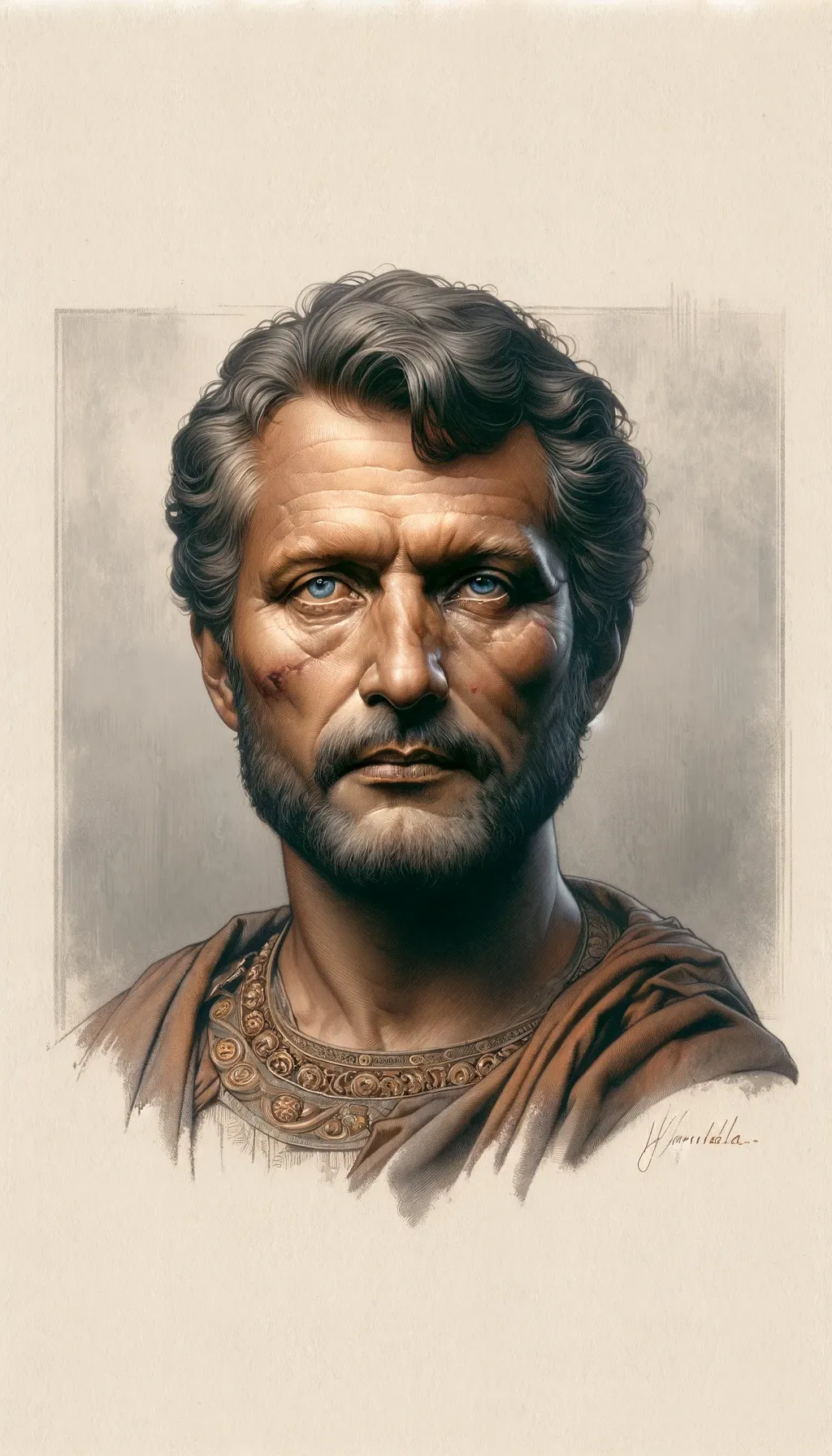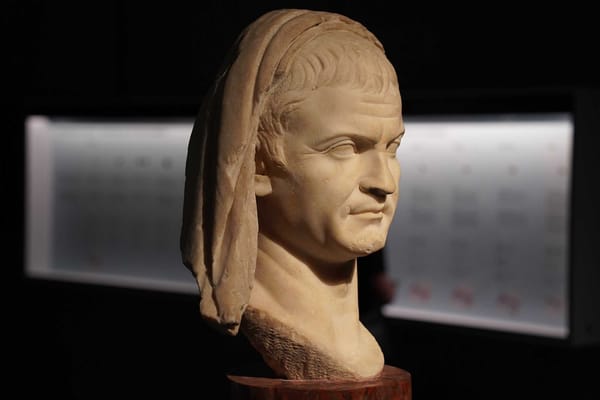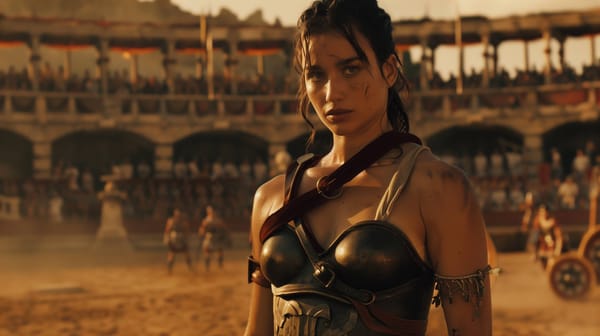The Battle of Cannae: Rome's Darkest Day
The battle of Cannae, the darkest moment of the Roman Empire and the greatest death toll in its history.

The greatest defeat of the Roman Empire was the battle of Cannae. The catastrophic losses Rome suffered in the battle, were unparalleled, likened by historian Adrian Goldsworthy to the devastating casualties the British Army faced on the first day of the Battle of the Somme in 1916, illustrating the scale of destruction as among the deadliest in combat history.
Occurring on August 2, 216 BC, near the ancient village of Cannae in Apulia, southeast Italy, this battle marked a pivotal moment in the Second Punic War between Rome and Carthage, showcasing the tactical genius of Hannibal Barca and delivering a blow to Rome from which it would take years to recover.
The March to Cannae
By 216 B.C., Rome found itself deep in the Second Punic War against Carthage, a struggle that had escalated from a territorial dispute into a fight for dominance. Following their victory in the First Punic War, Rome faced a bold invasion from Carthage's Hannibal, who crossed the Alps into Italy in 218 B.C. Leading a diverse army, Hannibal devastated Roman territories and inflicted severe defeats at the River Trebia and Lake Trasimene, causing up to 50,000 Roman casualties through his strategic brilliance.
After their initial defeats, Rome shifted to a strategy focused on disrupting Hannibal's supplies and avoiding direct battles, his area of expertise. Despite this clever approach, Rome's aggressive nature led them to abandon it quickly. In 216 B.C., Rome appointed Gaius Terentius Varro and Lucius Aemilius Paullus as co-consuls and formed its largest army ever, with the specific aim of decisively defeating Hannibal's forces.
The opportunity for a decisive battle emerged when Hannibal captured a crucial supply point near Cannae in southern Italy. Varro and Paullus pursued him, leading both armies to position themselves along the River Aufidus by early August. As reported by Polybius, Hannibal's forces comprised approximately 40,000 infantry and 10,000 cavalry, with his war elephants having perished by then. The Roman forces outnumbered them, boasting around 80,000 infantry and 6,000 cavalry.

Hannibal's Masterstroke
On August 2, in a sweltering, dusty plain, both armies prepared for combat. The Romans, under Varro's command for the day, adopted a traditional block formation, intending to use their massive infantry as a battering ram against the Carthaginian center. Anticipating this, Hannibal strategically deployed his troops in an innovative crescent shape, placing his weaker units at the center and elite forces on the flanks, aiming to turn Roman momentum to his advantage. The battle began intensely, with light infantry exchanges escalating to a pivotal moment when Carthaginian cavalry decisively defeated Roman horsemen on one flank.
In the thick of the battle, Hannibal's strategy unfolded as his front-line troops, engaged in fierce combat, deliberately fell back, transforming their formation to entice the Romans deeper into a trap. This maneuver drew the Romans into a compact space, surrounded on all flanks by Carthaginian forces. Hannibal's critical command then sealed their fate, with a coordinated attack from all sides, effectively encircling and overwhelming the Roman forces, leading to a catastrophic loss of tens of thousands of Roman and allied lives.
Livy describes, perhaps imaginatively, the final moments of Paulus Aemilius, who, amidst the dire battle, declines an offer of escape. Instead, he instructs the officer to inform Rome of Hannibal's triumph and chooses to die among his fallen comrades, a testament to his dedication and valor:
“leave me here to breathe my last among my slaughtered soldiers.”

A few Romans managed to flee before Hasdrubal's cavalry sealed their fate, effectively preventing any retreat by crashing into the Roman flank. The catastrophic battle of Cannae concluded with no chance of escape for survivors. Hannibal masterfully outmaneuvered a much larger force, securing one of Rome's most devastating defeats through strategic encirclement by his comparatively smaller army.
History written with blood
Polybius estimates the Roman and allied fatalities at 57,000, while Livy suggests just over 48,000 deaths. About 10,000 were captured, with the survivors, including Varro, fleeing. The loss heavily impacted Rome's leadership, with numerous high-ranking officials among the casualties. Carthage's losses were significantly lower, estimated at around 7,000, though actual figures might be higher.
A Republic Resilient
Any other nation might have been irreparably weakened by a defeat such as Cannae, yet Rome's resilience in the face of such adversity was unparalleled. This remarkable recovery is attributed to factors like the robustness of Roman society, its political structure, and military achievements elsewhere. The debate over why Hannibal didn't march on Rome post-Cannae continues, with consensus leaning towards his lack of siege capabilities and the unsuitability of urban combat for his cavalry and tactics, facing a potentially formidable and experienced civilian resistance.
The defeat at Cannae led Rome to revise its military approach, avoiding direct conflict with Hannibal for ten years. This period saw Hannibal roaming Italy with a diminishing force, while Rome employed guerilla tactics. Successes in Spain by Scipio Africanus, a Cannae survivor, culminated in a Roman invasion of North Africa, forcing Hannibal to leave Italy. He was ultimately defeated by Scipio at Zama in 204 BCE. Hannibal's later years were spent in exile, occasionally fighting against Rome, until his death in Bithynia, two decades after the war. Rome's strategic patience and readiness for combat when fully prepared were key to its eventual triumph.
Legacy of a Battle
Cannae remains a testament to Hannibal's military genius and serves as a study in the art of war, influencing commanders and tacticians throughout history. The battle's lessons in strategy, leadership, and the importance of adaptability resonate as much today as they did over two millennia ago. One famous discussion that shows how Hannibal was encouraging his troops, reflects the magnificence of his leadership.
Just before the Battle of Cannae, one of Hannibal’s lieutenants, a man named Gisco looked out upon the eighty thousand Romans and their allies who were assembling on the battlefield and remarked,
“The Romans must have twice as many men as we do, Hannibal!”
Hannibal replied,
“But you are forgetting one thing Gisco.”
“What’s that?”
Gisco asked.
And Hannibal replied,
“Out of all of those men you see out there, there’s not a single one named Gisco.





About the Roman Empire Times
See all the latest news for the Roman Empire, ancient Roman historical facts, anecdotes from Roman Times and stories from the Empire at romanempiretimes.com. Contact our newsroom to report an update or send your story, photos and videos. Follow RET on Google News, Flipboard and subscribe here to our daily email.
Follow the Roman Empire Times on social media: